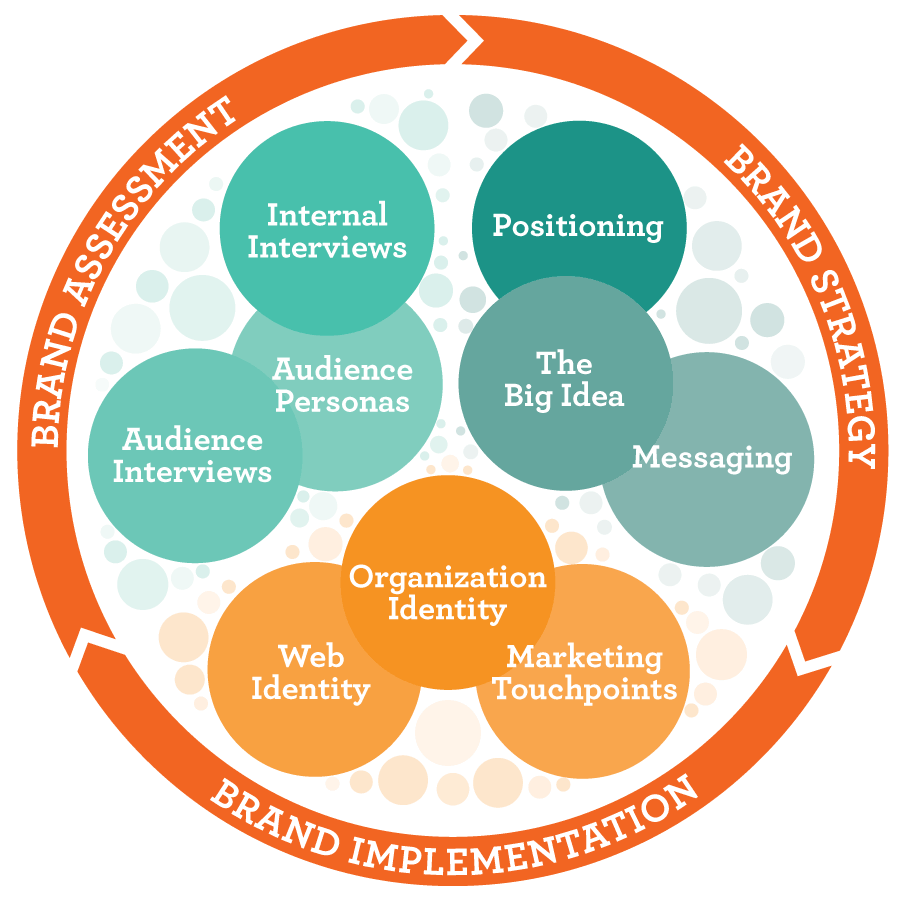Brand science for mission-driven organizations
As a B2B technology branding company, our sweet spot at Toolbox Creative is helping engineers, scientists and technologists bridge the gap between the science of science and the art of branding their technology company. The most effective way to start a branding conversation with an engineer is by presenting sweet, sweet, cold, hard data. Fortunately, there is a ton of powerful science to support the importance and efficacy of great branding.
When we’re not building brands for technology companies, we’re helping mission-driven organizations and nonprofits develop and manage their brands. There is plenty of great brand science for the nonprofit sector as well. Nathalie Kylander and Christopher Stone’s The Role of Brands in the Nonprofit Sector makes a compelling argument for why NPOs need to embrace branding as a core organizational strategy.
The big IDEA in nonprofit branding
A strong brand brings cohesion and capacity to a nonprofit organization. Research conducted by Kylander and Stone shows that well done branding actually improves the organizational efficiency of a nonprofit. While it’s understandable to see branding as a line item that can be cut when budgets and staff are already stretched, data shows that a strong brand builds a bridge between program strategy and external communication. The result is staff, volunteers and stakeholders better able to effectively articulate your mission, and donors, supporters and the community at large having a more cohesive understanding of why you should matter to them.
Specifically, when the following principles are applied, a strong brand actually increases the capacity of your organization. A cohesive NPO makes more efficient choices and better use of existing resources — increasing financial support, awareness and social impact.
Kylander and Stone developed a handy acronym to articulate the four key principles of nonprofit branding. IDEA: integrity, democracy, ethics and affinity.
Here’s a quick overview:
1. Brand integrity
Brand integrity, simply put, is keeping it real. It’s ensuring your internal identity matches your external image and they both support your mission. Does the way you discuss your challenge and mission internally match the message you share with the community? Without first confirming or establishing brand integrity, the branding process cannot succeed.
2. Brand democracy
Brand democracy is setting your brand free. Like a baby bird, your brand needs to be fed, nurtured and then set free into the world. Social media has killed the notion that nonprofits (or for-profits) can tightly control their brand identity. Brand democracy empowers NPOs to share ownership of their brand with staff, volunteers, supporters and the community as a whole. With a solid mission, strong messaging and effective brand identity in place, brand democracy can amplify your brand voice exponentially.
3. Brand ethics
Brand ethics is staying true to your values and culture. Brand ethics goes beyond being an ethical organization: It’s ensuring your brand message and image always reflect your core values. It’s referring to those you serve as guests, not victims. It’s calling affordable living structures homes and not units. When every representative of an NPO clearly understands their brand ethics, they become powerful and effective brand advocates.
4. Brand affinity
Brand affinity is being a collaborative force in your sector. Brand affinity is being a baker, not an eater. It’s recognizing that a rising tide lifts all boats. The reality of surviving as a nonprofit can breed an unhealthy culture of isolation and competition, which makes brand affinity easy to embrace in principle but hard to embrace in practice. For smaller NPOs, brand affinity makes partnering with large NPOs less intimidating. For larger NPOs, it positions them as a partner of choice, rather than a threatening, dominant force in your sector.
In our experience, brand affinity is the hardest to achieve but most effective brand principle for nonprofit organizations.
Branding for nonprofit coalitions
Branding is a complex challenge for coalitions, but the IDEA principles can help. Nonprofit coalitions face a significant branding challenge. The mission and brand of each coalition member needs to both stand alone and work toward the greater good. The coalition brand needs to convey the unified message without eclipsing the members’ brands. When the IDEA principles are applied to coalition brand development, members think of themselves as a flotilla of ships, all rising with the tide, all flying the coalition flag, while retaining their own brand identity.
How can nonprofits get the most out of branding?
A great organization deserves a great brand. Many nonprofits are tightly run ships, with strongly articulated missions, clear visions, well-trained staff and strong support networks. That’s the requisite foundation on which a great brand can be built. A well-run NPO deserves a brand as compelling as its mission.
Here are the steps to developing a great brand for mission-driven organizations:

1. Brand Assessment. You can’t get where you’re going until you know where you stand. Brand assessment gets to know your team and your supporters on a heart, mind and gut level. Internal interviews uncover valuable insights and build internal consensus. Audience interviews dig deep to learn more about your donors, supporters and partners — what they think of your organization and how well they understand your mission. Then audience personas are documented to profile your distinct audiences, identify their emotional triggers and prescribe how to effectively engage them.
2. Brand Strategy. Inspire your audience to take action. Brand positioning articulates your unique place in your sector, how you’re different and why people should care. Brand messaging establishes the voice of your brand, solidifies internal cohesion and forms the foundation for all brand messaging to come. The big idea is your campaign concept. If you had a billboard, the big idea would be on it.
3. Brand Implementation. This is where your brand starts to interact with your audience. Organization identity establishes your overall look and feel and provides brand standards to guide staff, volunteers and partners. Web identity builds your total digital presence from website to email to social media. Marketing touchpoints are individual pieces prescribed to meet your needs and can include cases for support, videos, direct marketing, advertising, infographics and print materials.
Brands are in the hands of the consumer, the donor and the community as a whole. Great branding amplifies already compelling stories from nonprofits that are passionate about what they do and do it really well. Branding is a critical piece of any nonprofit fulfilling their mission.
Download the PDF:
AnIDEAworthSharing_BrandingNPOs



